Listening Beneath the Surface: Acoustic Tracking of Sharks in Fiordland’s Hidden Waters
It was a cold, rainy evening in Te Moana o Atawhenua (Fiordland, New Zealand), and the sun, which hadn’t been seen all day, had already set by 5:30 p.m. Huddled in our warmest jackets on the back of the MV Pembroke in Breaksea Sound, our research team sat quietly with two fishing lines hanging in the dark water behind the boat. It was our first night aboard the Pembroke, and the lights from the vessel, our research base and home for the next eight days, shone in the rippling water.
All was quiet until a gentle tug on the rope and the call of “shark on the line” brought us all to our feet. We had just caught our first school shark of the trip. Despite measuring less than a meter long, this slender school shark was surprisingly strong. We secured her safely to the side of the boat and set about collecting measurements and fitting her with an acoustic tag. At 93 cm long, this immature female school shark became the first of her species ever tagged with an acoustic transmitter in New Zealand waters.
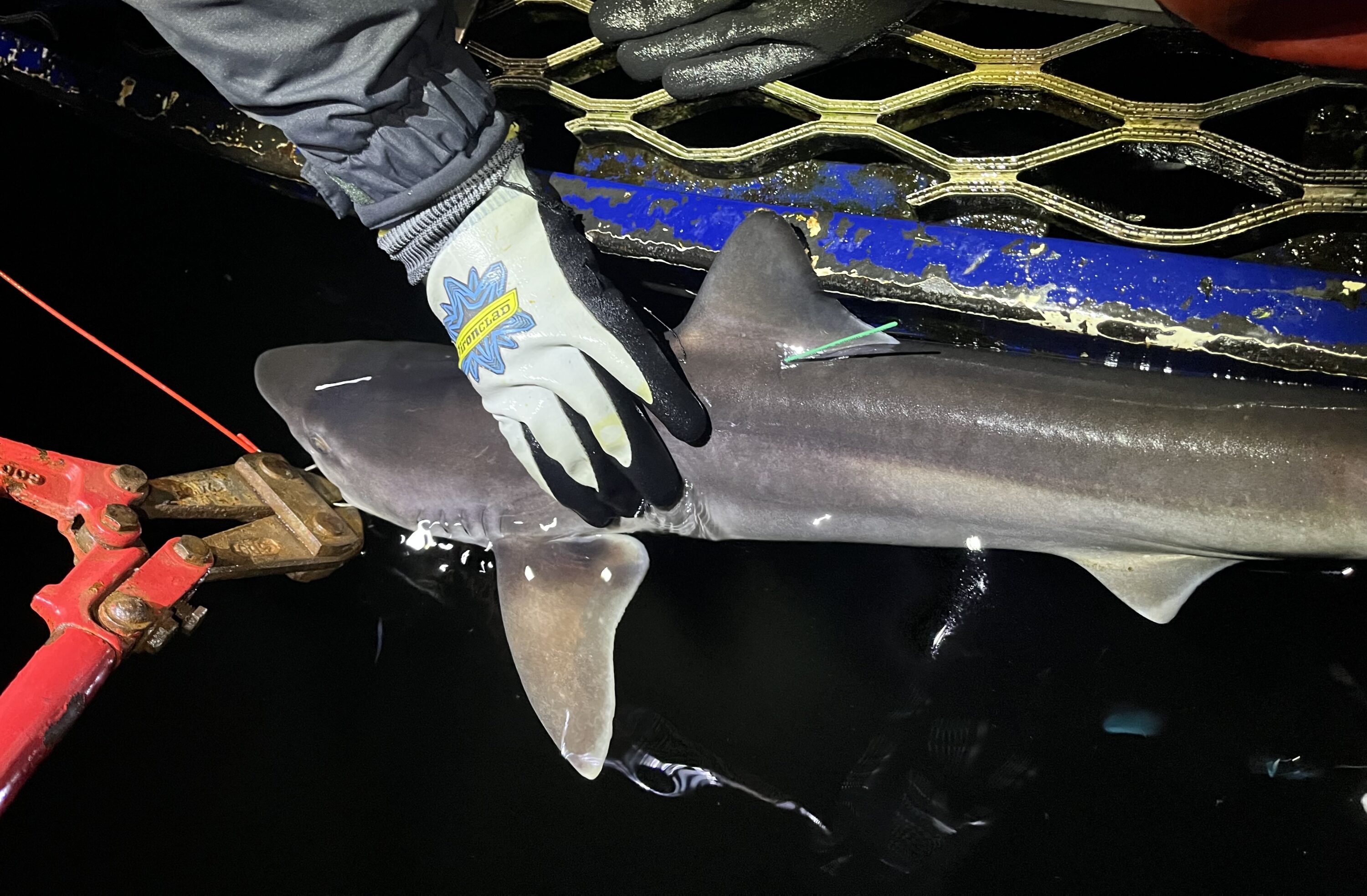
Juvenile school shark, about to be released after being fitted with an acoustic tag. Photo © Eva Ramey
Into the Fiords
The goals of our research trip aboard the Pembroke were twofold: first, to tag 10 school sharks (Galeorhinus galeus) and 10 spiny dogfish (Squalus acanthias) with acoustic transmitters, and second, to service the acoustic receiver array that will log their future movements. On this trip we exceeded our expectations with the school sharks, tagging 13 individuals, but the elusive spiny dogfish proved trickier to locate, with just one female caught and tagged during the trip. This was also the first spiny dogfish to be tagged with an acoustic transmitter in New Zealand.
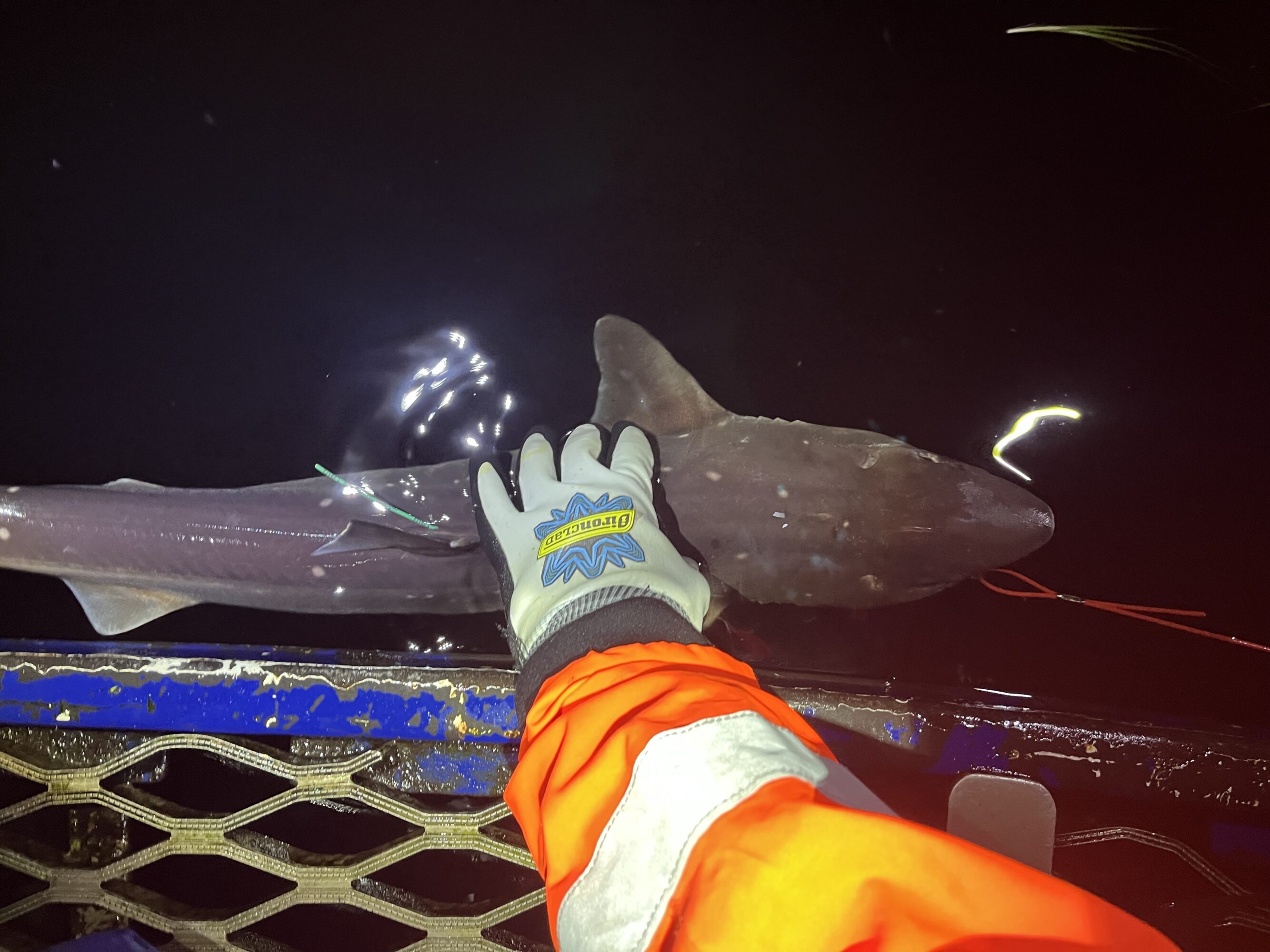
Mature female spiny dogfish after being tagged with an acoustic transmitter. Photo © Eva Ramey
Silent Signals in the Deep
Maintaining our underwater receiver array is no small task. These “listening stations” detect and log the unique pings from acoustic tagged sharks, allowing us to track their movements over time. Some of these devices are moored over 100 meters below the surface. Using acoustic release systems, we were able to bring up two deep-water VR2AR receivers for battery replacement before returning them to the seafloor.
Other receivers required SCUBA dives, often in cold, low-visibility conditions, to check their integrity, clean biofouling, and offload data. It’s a critical part of the work: without a healthy and functioning array, our tags won’t be able to tell us the full story of these sharks’ movements.
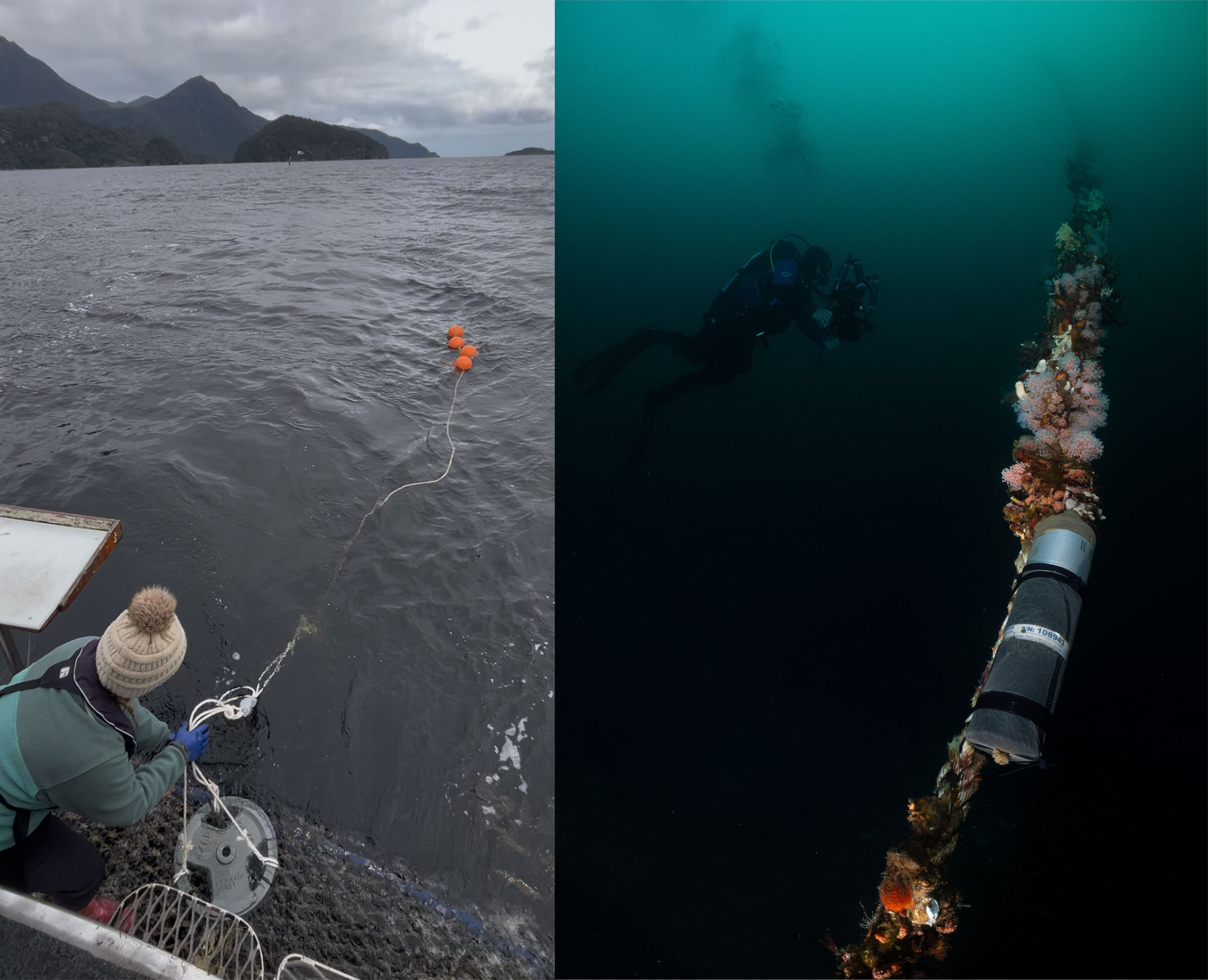
Left image: Eva Ramey deploying a VR2AR receiver on an acoustic release mooring to 268m deep in Dusky Sound. Photo © Ross Dwyer; Right image: An acoustic receiver on a mooring in Breaksea Sound, with Prof. James Bell in the background. Photo © Matteo Collina
Understanding Shark Spaces
Our research aims to identify which parts of the fiords are important for coastal sharks, including our newly tagged school sharks (Galeorhinus galeus), spiny dogfish (Squalus acanthias) and some currently tagged broadnose sevengill sharks (Notorynchus cepedianus). Do these species gather in specific areas? How do different species share or divide space? And how much time do they spend within marine protected areas (MPAs)? These are some of the questions we hope to answer as we analyze movement data from the tagged sharks.
We’re also investigating how conditions, like prey availability, or habitat type, might drive these species to frequent certain places over others. Understanding these patterns helps us assess how effective MPAs are for shark conservation.
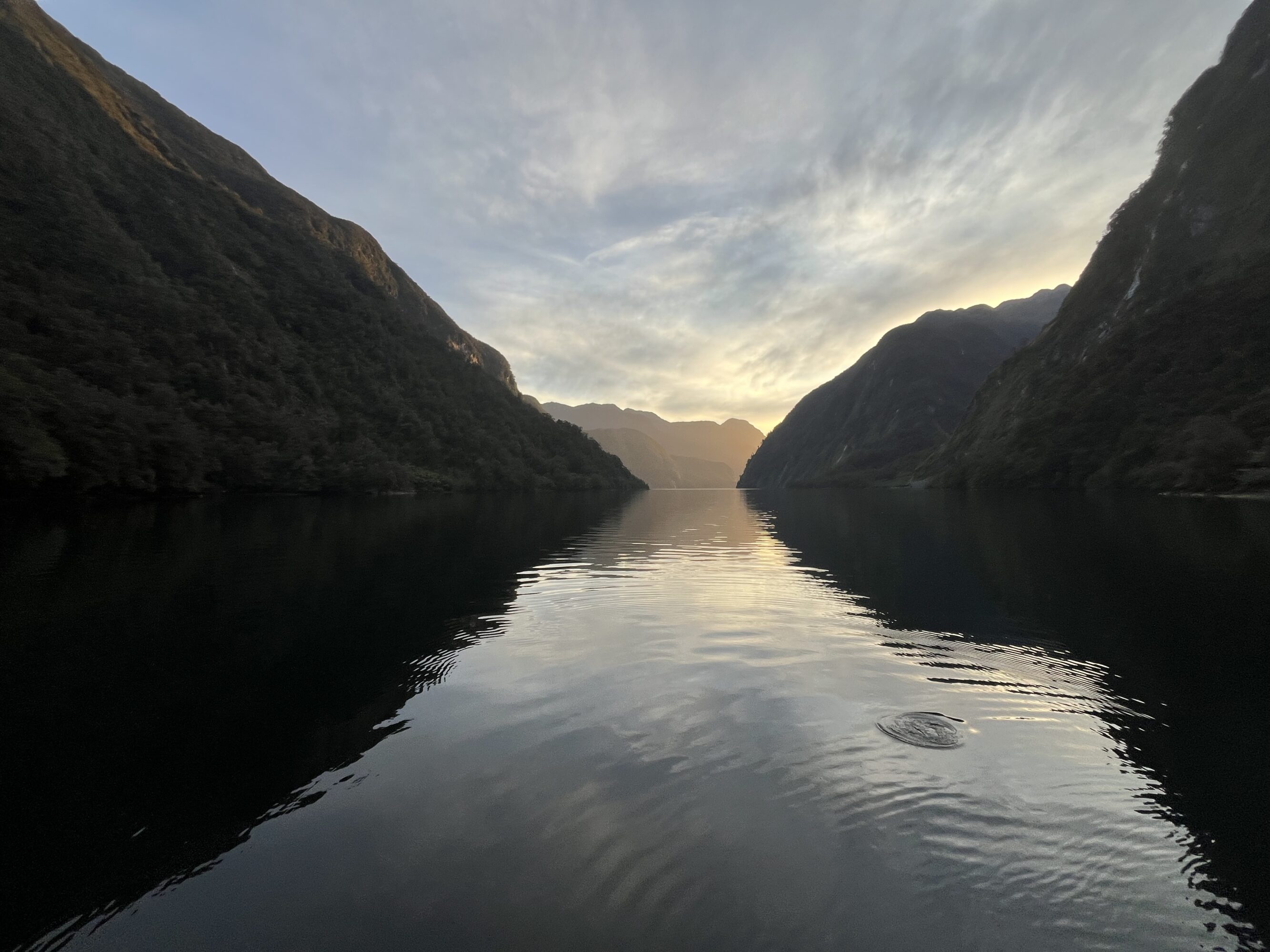
Sunset over Wet Jacket Arm Marine Reserve (Moana Uta). Photo © Eva Ramey
What Comes Next
Although we didn’t reach our goal for spiny dogfish this time, we’ll be heading back to the fiords in October to complete the tagging. With the acoustic array now fully serviced, we’re set to start collecting valuable data on shark behavior over the coming months.
Every tag, every dive, and every data point helps us get a clearer picture of how these species live, move, and interact in one of the most breathtaking and understudied marine systems in Aotearoa. We’re just beginning to uncover their story, one ping at a time.
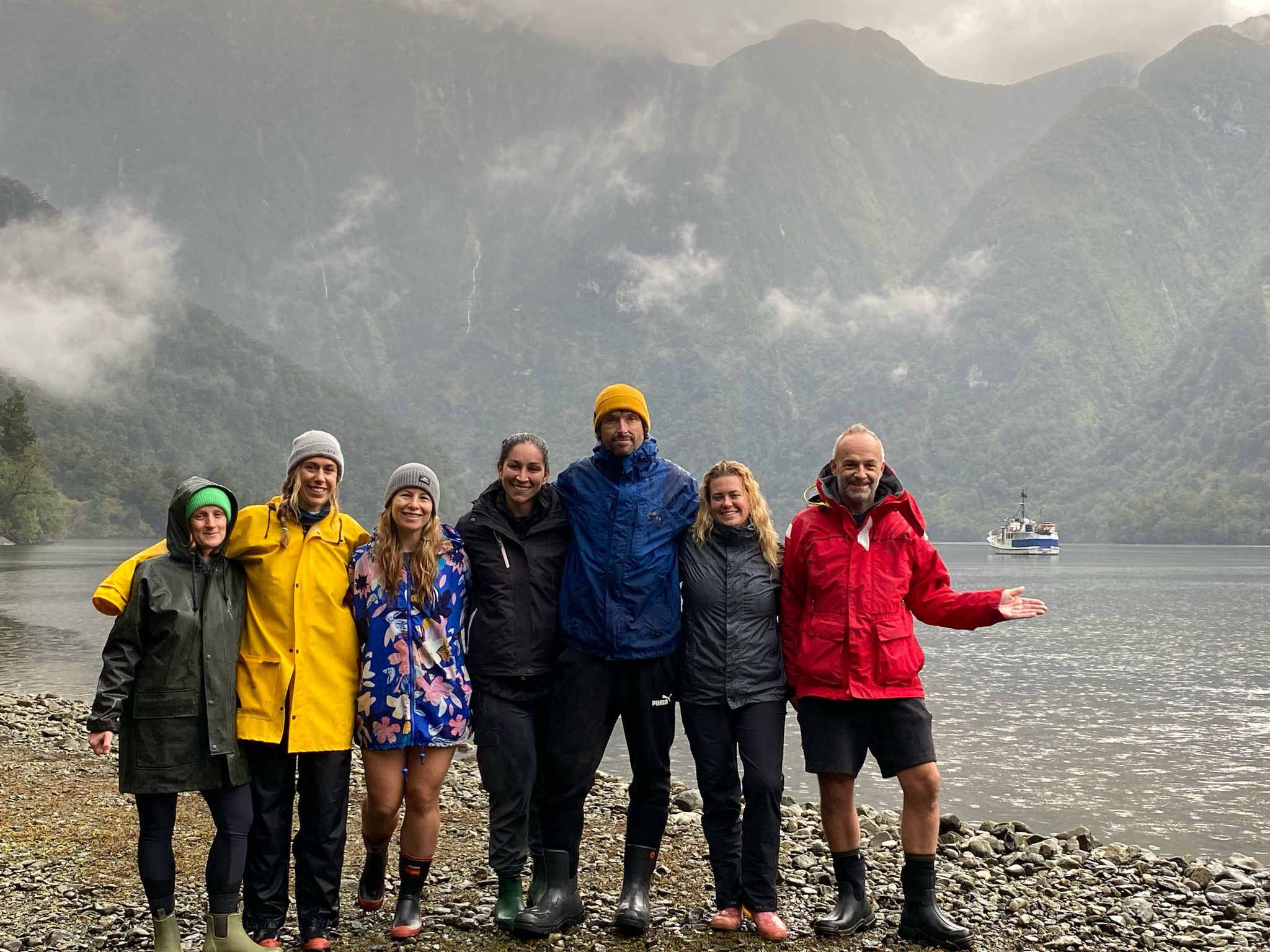
Our expedition team in Breaksea Sound, with the MV Pembroke in the background. Left to right: Alice Rogers, Emma Novak, Amber Kirk, Brit Finucci, Ross Dwyer, Eva Ramey and James Bell. Not pictured, our awesome skipper and collaborator from the Southern Fiordland Initiative, Paul Mitchell, and amazing crew, Fiona Lee. Photo © Fiona Lee
